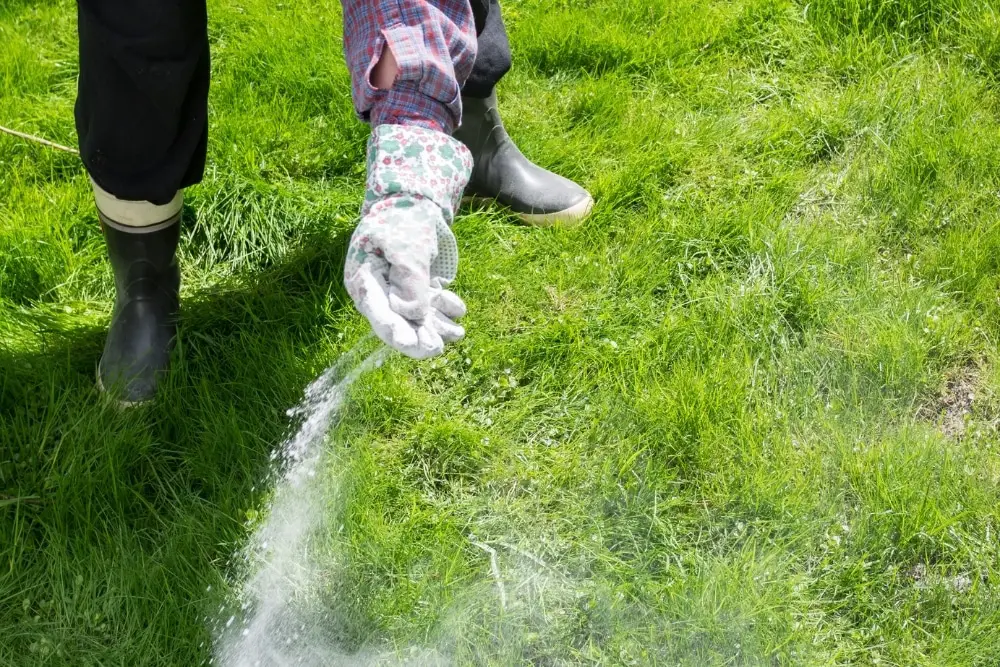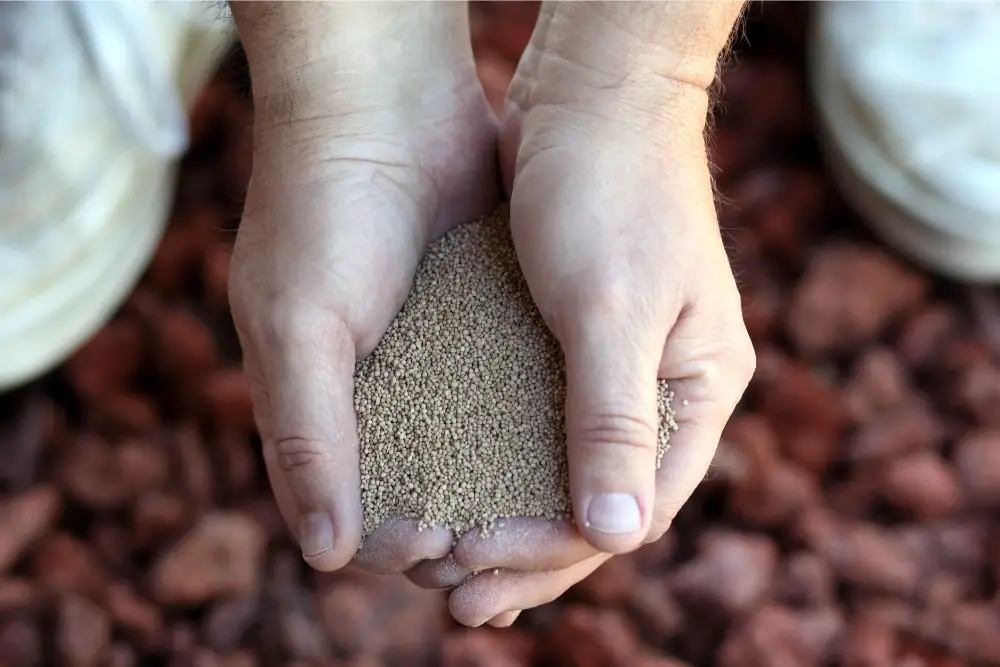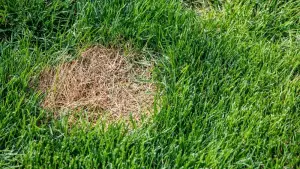There’s nothing better than a lush and vibrant green lawn but this can sometimes be difficult to achieve. Did you know that the soil can sometimes affect the health of your grass resulting in improper growth?
If you do not add lime to your lawn then it will not access any of the nutrients in the soil and eventually, it will turn a dull brown color.
If you are planning on applying lime to your lawn for the first time, you may be wondering when you should do it and how it should be applied.
We have provided you with all of the answers in our guide below, as well as reasons why liming your lawn is important.
What Is Lime?
Made from pulverized limestone rock, lime is an inorganic mineral that contains calcium and is made up of hydroxide and oxides. As a versatile mineral, it is used for environmental, agricultural, construction, and chemical purposes.
Adding lime to soil helps to neutralize soil that is acidic and increase the pH so that it becomes more alkaline. Although it contains nutrients that will benefit the health of your soil and your lawn, it should not be used instead of fertilizer.
Why Should I Apply Lime To My Lawn?
There are several reasons why you should apply lime to your lawn. As we have mentioned previously, lime will help to reduce the acidity of your soil and in doing so it will make it easier for your plants to access the nutrients that they require to grow.
Lime also provides your lawn with a supply of calcium and magnesium which helps to maintain the lushness and the color of the grass. It also helps to protect the lawn against damage that can be caused by exposure to heat and drought.
When Should I Apply Lime To My Lawn?
When it comes to applying lime to your lawn, correct timing is paramount.
The lime will not break down in the soil straight away because this is a process that takes time and it will also depend on what the condition of your soil is like currently and the lime product that you use.
Generally, it is recommended that you lime your lawn between fall and spring. Applying the lime during fall will give it the best chance of having an impact on the condition of your lawn ahead of the next season.
It is worth noting that rain and frost can dilute the lime and because of this, it may not work to its greatest potential.
As stated, applying lime will not trigger immediate changes because it takes time to work, in fact, it can take many months for the lime to have any effect on the pH of the soil.
You should avoid applying lime during the spring and summer months. This is because the grass that has already started to grow is at risk of burning.
High temperatures can also affect the chemical reaction of the lime and may result in even more unbalanced pH levels.

How To Apply Lime To My Lawn
Below, we have identified several steps involved in the process of applying lime to your lawn.
Before you add any lime to your lawn, it is recommended that you test the pH of the soil using a pH test kit. Doing this will allow you to see how much lime your soil needs.
After testing the pH of the soil, you should dedicate sufficient time to preparing the lawn. Aerating your lawn will make it easier for the lime to reach the soil once you have added it and as a result, the product will work more effectively.
It is important to make sure that you choose the right type of lime for your lawn because there are a few different types available. For example, some come in the form of a powder and others come in the form of pellets.
You should choose the type that you are going to find the easiest to work with. Depending on the type that you choose, it is likely that you will need to use a spreader to apply it evenly.
If you do not feel confident about applying the lime to your lawn yourself, you can enlist the help of a professional who will be able to do it for you. If you decide to do it yourself, you will need to begin by making sure that your lawn is dry.
Then equip yourself with the necessary protective equipment such as gloves and a respiratory mask. Not only is lime messy to work with, but it can also have harmful effects if it is inhaled.
Lime is also likely to burn skin if it comes into contact with it so you should never apply it using your hands.
Next, it is time to apply the lime. It is advised that you work in areas rather than tackling your entire lawn at once because it is likely that you will need to backtrack to cover parts that you have missed.
Mix the lime into the top 5 inches of the soil and use no more than 0.5 kg per square meter. After you have mixed it into the top layers of the soil, you can then sprinkle the rest onto the top of the surface.
If you have any queries regarding how the lime should be used the packaging will likely display guidance provided by the manufacturers.
Finally, you need to water the lawn. This will push the lime closer to the soil and will also wash it off the blades of grass. If the lime is in contact with the grass for too long, it may cause it to burn.
You should also wash any surrounding paved surfaces or plastic because the lime may cause it to erode.
Final Thoughts
Applying lime to your lawn can have many benefits but you must make sure that it is used carefully to eliminate any risks of it harming you or the grass. There are also a few varieties available so you must choose the best type for your needs.




